Fig and Pecan Sweet Rolls | Baked | Gluten-Free | Vegan | Yeast-Free

 Add to favorites
Add to favorites
Just like the center of Fig Newton cookies, these sweet rolls are full of deliciously crunchy seeds. They are hearty while also being sweet (but not overwhelmingly so), making them perfect for breakfast, snacking, or any occasion where delicious and nutritious food is called for. Eating healthy doesn’t mean we have to sacrifice taste, comfort, and pleasure.
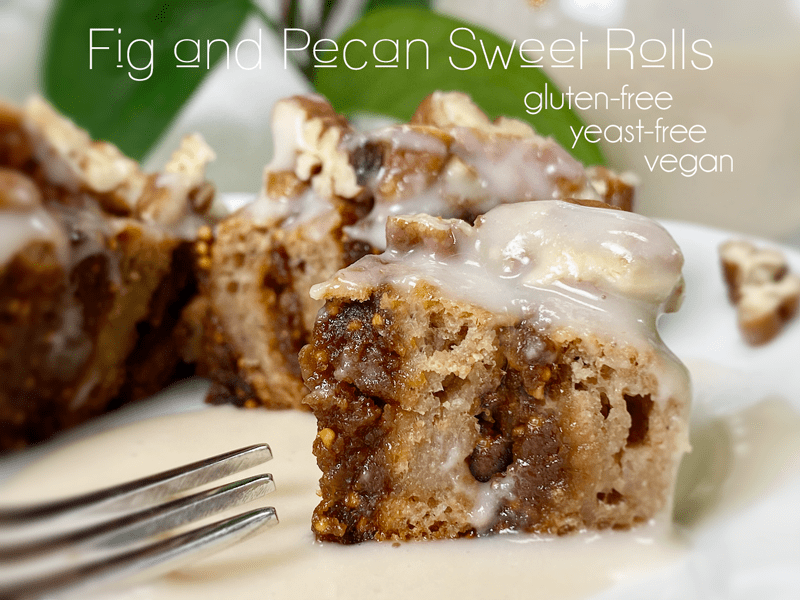
If you have been a member of Nouveauraw (slowly converting to AmieSue.com) you will have noticed that I have been in a baking frenzy. I have been creating bread, bagel, pretzel, muffin, and now sweet roll recipes! It was born out of necessity, actually. I love making food for others, but I REALLY love making foods for Bob. He is so appreciative and expresses this gratitude daily for all the yummy foods he gets to partake of. Over time, he has started to request more bread-like recipes. As soon as the words departed from his lips, I was in the studio, donning my chef’s hat! You can check out the other baked recipes (here) and (here).
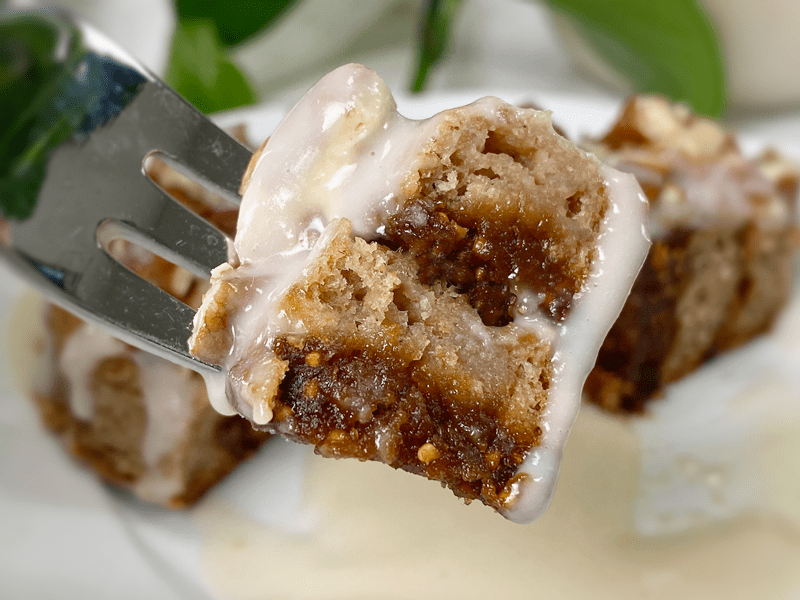
If you wish to try your hand at raw loaves of bread, you can click (here). I have been designing and making them for over a decade now. Raw loaves of bread consist of bread that isn’t heated above 115 degrees (F)… which can be achieved through a few techniques that I teach. You don’t have to be 100% raw in order to enjoy them. Foods don’t have to be grouped together to fit under dietary labels. Do you remember the big craze of creating a fusion of ethnic cuisines? Well, we can adopt the same concept when it comes to building our daily menus. We can enjoy a beautiful balance of raw and cooked foods.
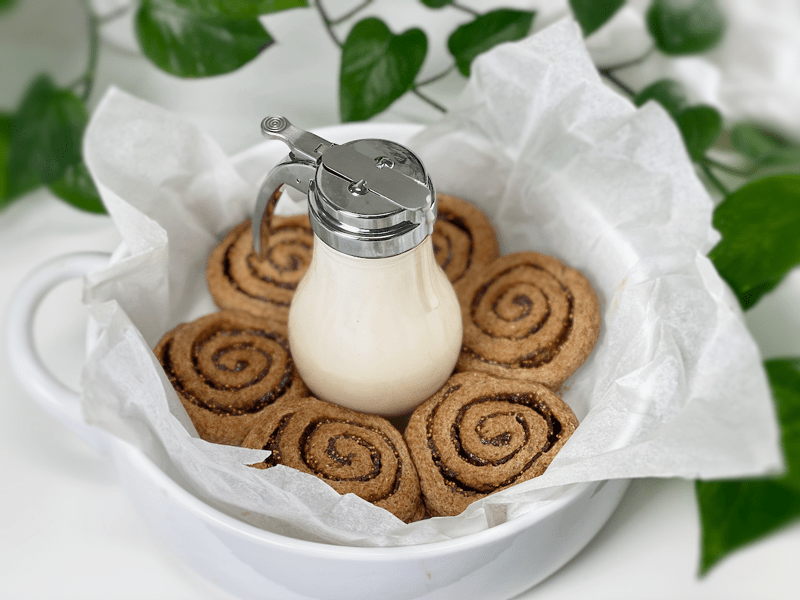
These sweet rolls are delicious all on their own, but who doesn’t love a little drizzle of icing?! Actually, Bob has never been a fan of icing on sweet rolls or donuts. So, with that being the case, I have grown accustomed to serving the icing alongside the rolls rather than covering them with the assumption that everyone loves icing as I do. Down below in the ingredient section, I provide a very quick and simple icing recipe, but if you want further inspiration, check out some other recipes that I gathered together for you.
Additional Topping Options
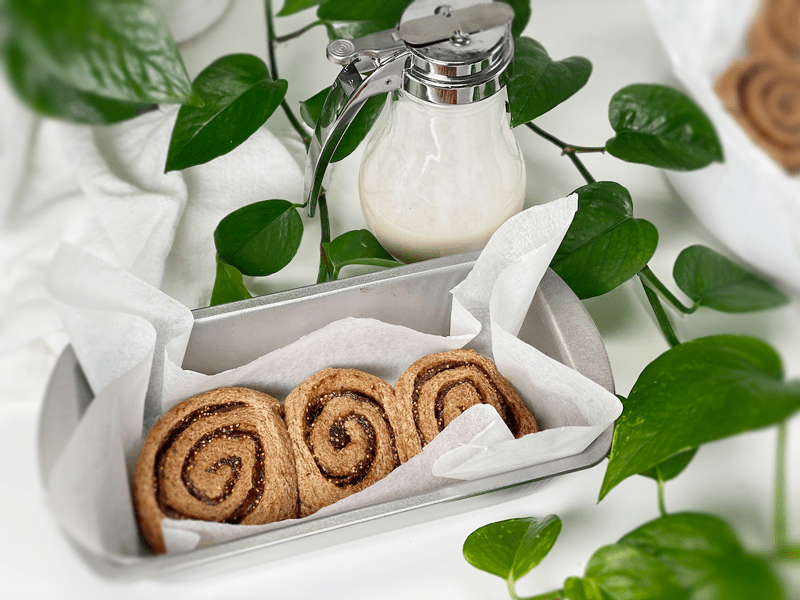
Tips and Techniques
- When rolling out the dough, lay a piece of plastic wrap on top so it doesn’t stick to the rolling pin.
- Baking: Regardless of what type of baking dish or pan you use, make sure to line it with some parchment paper. Also, be sure to give a little space between each roll, since they do expand.
- When spreading the fig paste on the dough, be generous but not TOO generous. There’s enough fig paste to create a solid layer on the dough. If you can see the dough through the paste, you are spreading it too thin.
- This recipe can be made (up to the baking point), frozen, thawed, and then baked! I tested this and they turned out perfectly. What a great way to be prepared for an upcoming event or just as a time-saver throughout the week.

If you plan on serving these for a special event, display the sweet rolls with the icing in a container with a pour spout. Let your guests or loved ones drizzle it on themselves. It creates a sense of involvement, giving them a moment of excitement as well as control over the amount of icing they prefer.
Rewarming the Rolls
- If feeding a large family or group of friends, you can bake them right before the celebration, serving them warm.
- If you baked them ahead of time, you can slide the whole pan back into the oven to warm them.
- If it is just you enjoying a single sweet roll, or if you are setting up a buffet, pull the toaster out and toast them as needed. You will need a toaster with wide slots, like a bagel toaster.
- **Of course you want to wait to ice them until after reheating them.
I hope you and your loved ones enjoy this recipe. Please be sure to leave a comment down below. blessings, amie sue
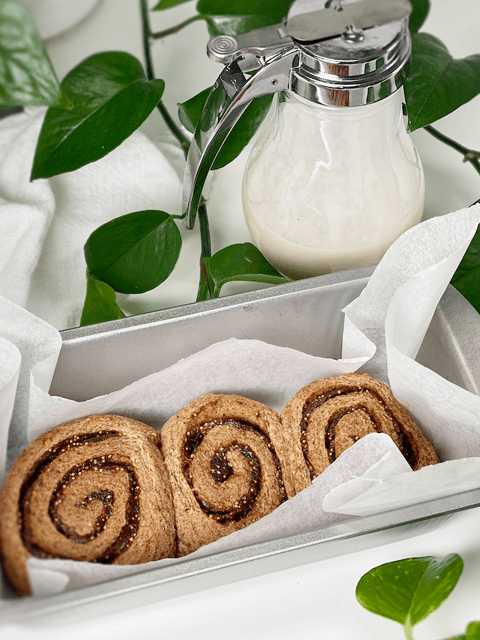 Ingredients
Ingredients
Yields 10 sweet rolls
Fig Paste
- 2 cups dried figs
- 2 cups water
Psyllium Gel
- 2 cups (16 oz) water (fig soak water)
- 5 Tbsp (30 g) psyllium whole husks or 3 Tbsp (32 g) psyllium husk powder
Sweet Roll Mix
- 1 cup (100 g) gluten-free, rolled oats, ground
- 3/4 cup (100 g) almond flour
- 1/2 cup (100 g) raw hulled buckwheat, ground
- 5 Tbsp (40 g) arrowroot powder
- 1 tsp (4 g) baking powder
- 1/2 tsp (3 g) baking soda
- 1 tsp (6 g) sea salt
- 2 Tbsp (44 g) maple syrup
Filling
- 1 cup (277 g once made) fig paste (ingredients listed above)
- 1/2 cup (60g) whole pecans, chopped
Icing – yields 1 1/4 cup
- 1 cup plant-based milk
- 1/2 cup raw coconut butter
- 1/4 cup maple syrup
- 1/2 tsp vanilla extract
- pinch sea salt
Preparation
Fig Paste
- Before you start anything you will want to make the fig paste first because we are going to use the same water that we soak the figs in, in our psyllium gel. The measurements used to create the fig paste will produce more paste than what is needed for the recipe. Save the excess to spread on toast or add to perhaps a bowl of warm oatmeal. The food processor needs the measurement of figs in order to blend properly.
- Start soaking the dried figs in warm water for 15-30 minutes so they soften.
- Do not throw out the soaking water, because we will use that when making the psyllium gel.
- It also adds a subtle sweetness to the dough.
- After they are done soaking, drain the water so you can make the psyllium gel with the fig soaking water.
- Place the soaked figs in the food processor, fitted with the “S” blade. Process to a paste. If needed, add a little water to smooth out the fig paste. Measure out 1 cup (277 g) worth for the filling. Set aside.
Psyllium Gel
- Quickly whisk the soak water and psyllium husk powder in a mixing bowl. It will instantly start to gel, which is to be expected. Set aside while you prepare the remaining ingredients, so it can thicken.
- Preheat the oven to 350 degrees (F) and place the rack in the center of the oven.
- Line a baking dish with parchment paper and set aside.
Bread Mix–Dry Ingredients
- In the mixing bowl that we are going to knead the bread in, whisk together the oat flour, almond flour, buckwheat flour, arrowroot, baking soda, baking powder, and salt.
- I place the rolled oats and buckwheat kernels in the blender to break them down to flour.
- If you have a sifter, use that to thoroughly incorporate all the dry ingredients. Otherwise, use a whisk.
- If you don’t wish to use almond flour, you can use sorghum flour in its place. Same measurement.
Mixing the Dough
- Add the psyllium gel and drizzle the maple syrup around the bowl.
- Using either a hand mixer or a free-standing mixer with dough attachments, knead for 5 minutes (set a timer on your phone) to ensure that it gets kneaded enough (don’t we all love feeling needed?).
- Start the mixer on low until the flour is folded in, then turn it up one speed; don’t go any higher. If you start off at too high a speed, the flour will jump out of the bowl.
Rolling the Dough
- Place the dough on a piece of parchment paper, cover with plastic wrap, and roll it out into a rectangle. Mine measured 15″ x 11″ x 1/4 ” thick.
- Spread the fig paste, making sure to cover the entire surface. Sprinkle the chopped pecans on the fig paste.
- Starting from one end, roll the dough into a log. Cut into roughly 1″ slices. I was able to make 10 sweet rolls.
- Place the sweet rolls in the lined baking dish. I left a little space between them, since they expand a bit while baking.
- Bake on the center rack for 25 minutes. Check and see if they need longer, each oven is different.
- When done baking, slide it onto a cooling rack.
- Once the sweet rolls have thoroughly cooled, you can store any leftovers in an airtight container. They should last up to roughly 5 days on the counter or in the fridge. You can freeze them by individually wrapping them so you can take them out as needed.
Icing
- Place the plant-based milk, softened coconut butter, maple syrup, vanilla, and salt in the blender, blending until smooth. Pour into a container with a pouring spout, or use a squeeze bottle.
- If you make this icing ahead of time and it firms up, warm in a water bath until spreadable.
- Drizzle over all of the sweet rolls or one at a time upon serving.
- Icing should keep for a week, possibly longer.
-
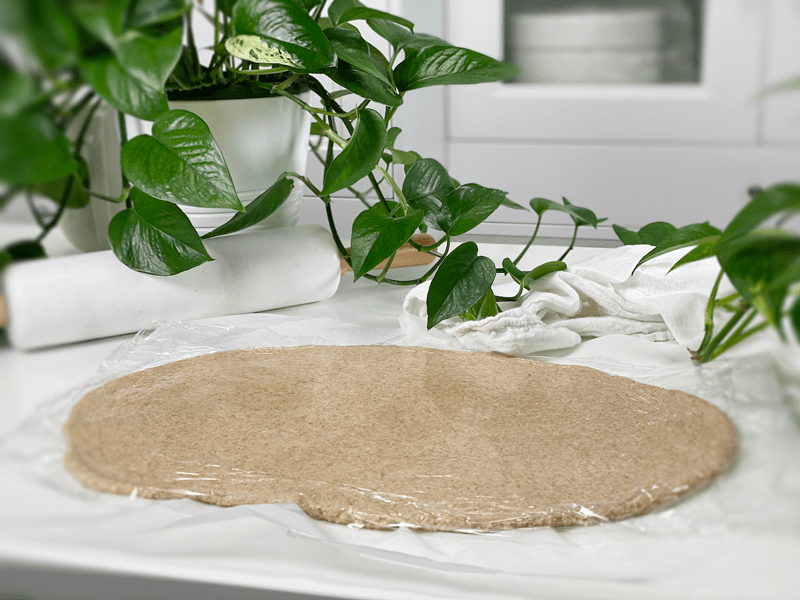
-
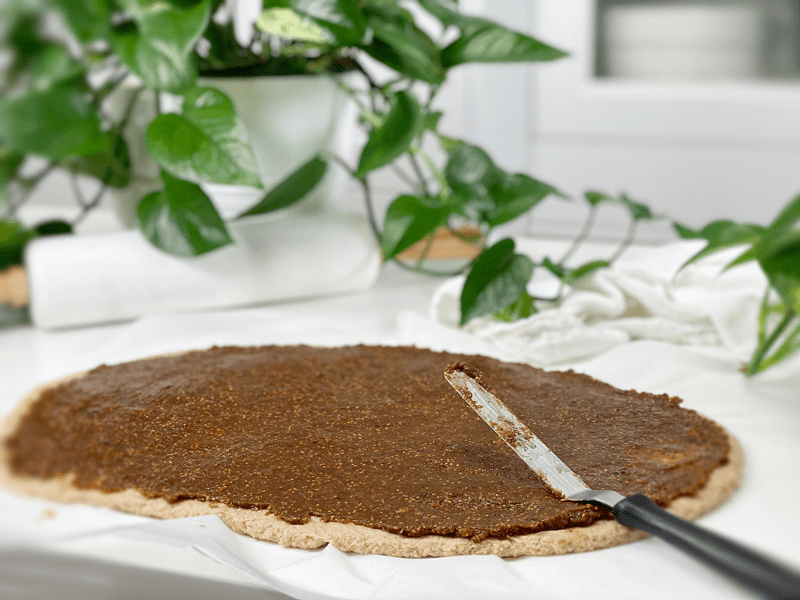
-
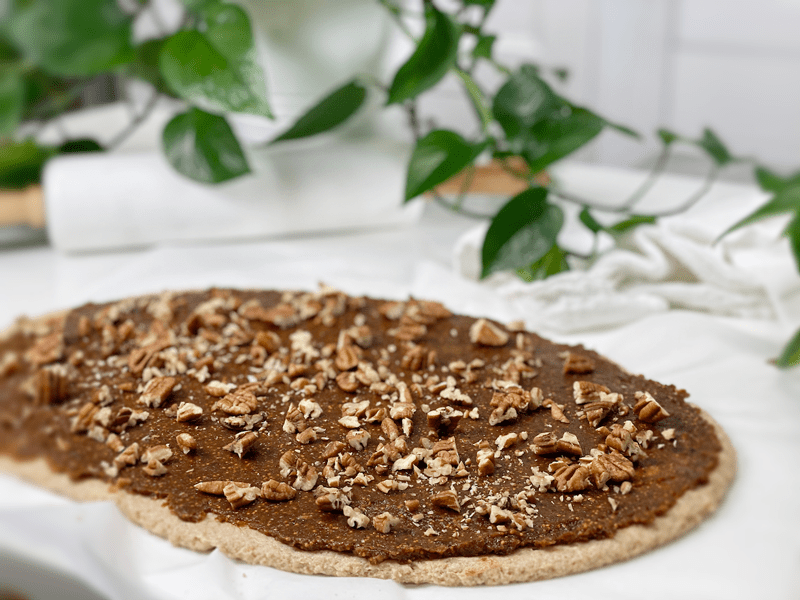
-
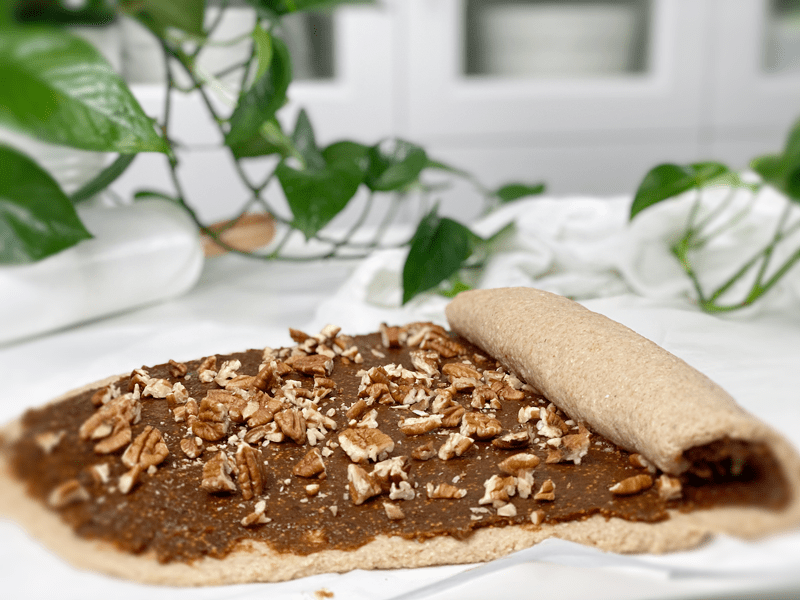
-
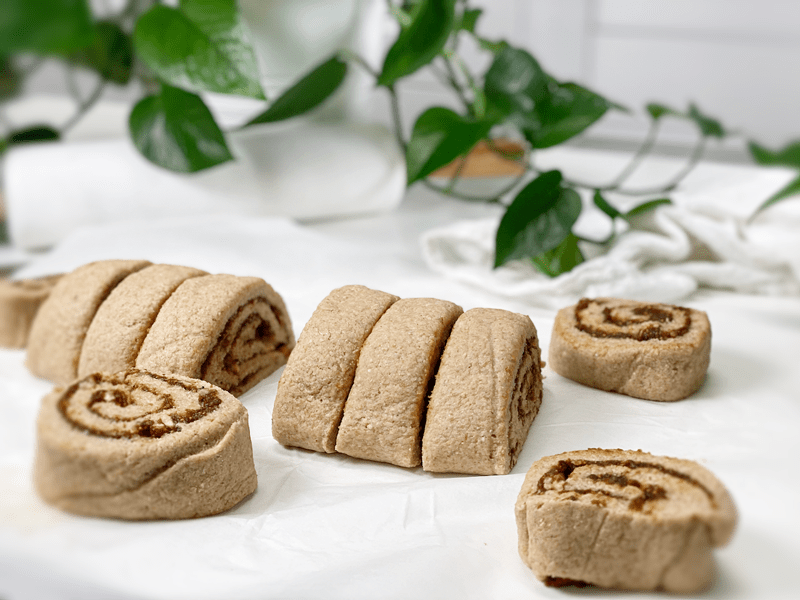
-
As you can see, they look a little oblong after slicing the dough. That’s okay; gently press on the edges to create a circle.
-
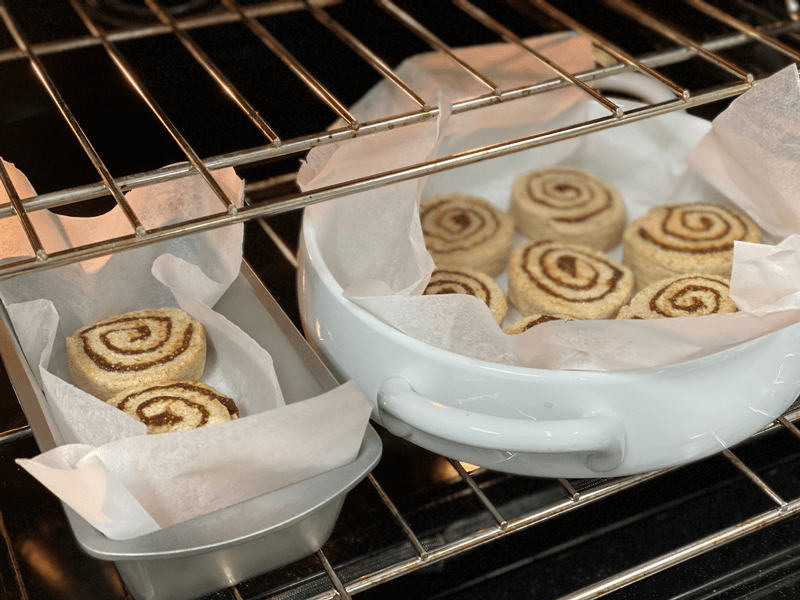
-
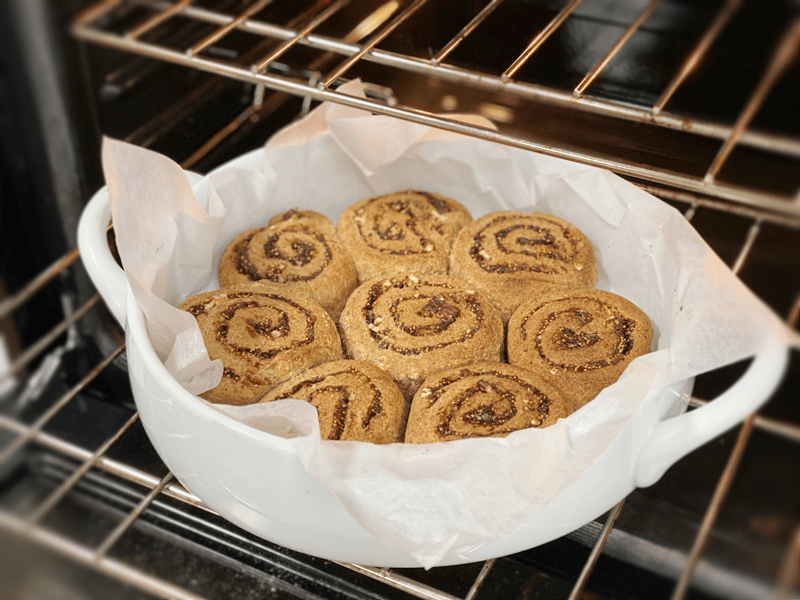
-
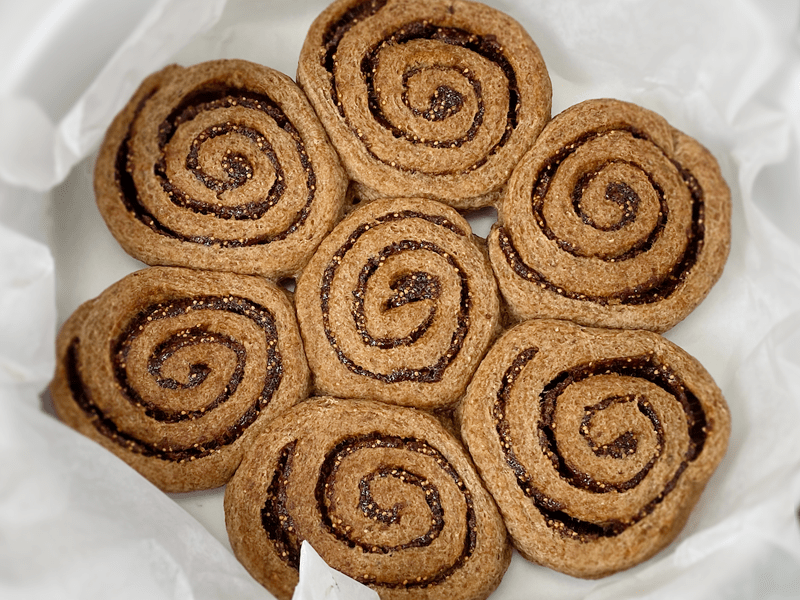
© AmieSue.com
Tags: Gluten Free, Oil-Free, Vegan, Yeast-Free



 Add to favorites
Add to favorites





 Ingredients
Ingredients
Hi Amie Sue,
This recipe really speaks to me! Just two questions; you mention sorghum flour in the instructions but I cannot find it in the ingredients list (Perhaps use instead of almond flour?) and the second question is; when you use the hulled buckwheat have you soaked and dried them in the dehydrator first or do you grind them right from the box? As I understand it buckwheat contains a substance that can irritate the eyes if not soaked first? Thanks! 😊
Good day Veronica :)
Oh gosh, you are right. I have made this recipe many times and both sorghum or almond flour works. I adjusted the instructions. As far as the buckwheat goes, I haven’t been soaking them for my bread recipes BUT you surely could. I haven’t read about buckwheat irritating the eyes so that is something I will research. Just be sure to dehydrate them before adding them to the recipe since wet buckwheat would add too much moisture to the dough. Always a pleasure to hear from you. blessings, amie sue
Thanks for responding so quickly, Amie Sue, I plan to make them today. :)
How much Sorghum flour do you use to replace the almond flour?
I have read about a substance on buckwheat that might irritatate the eyes which is why it is recommended that we rinse buckwheat until the water is clear without any pink hue left in the rinse water. It seems to vary between brands due to when the buckwheat was harvested. If it is harvested after the frost has settled, the substance is broken down. Since the info might not be on the box, I always rinse. However, I use organic buckwheat flour and I don’t rinse that so I am sure it is fine without rinsing, it has just become a habit. :)
I searched to see what I could find for you. On a Swedish site (http://hungrig.nu/?p=31765&m=8303) I found the below info (translated):
“The husk and skin on the kernel of some brands of buckwheat might contain a red dye (phagopyrin) which can irritate the mucous membranes of our body and also has a slightly bitter taste. Buckwheat is usually hulled when it is sold, but there may be residues of the dye left in the hulled product which is why it might be a good idea to rinse it.”
Thank you Veronica for the information. I will surely dive into it. :) As far as using sorghum, you will use the same measurement (3/4 cup (100 g).
Let me know how it goes for you. hugs, amie sue
It’s me again Veronica. Well, I spent the morning trying to dive into the world of phagopyrin and it wasn’t an easy subject matter to find. I tried to veer away from blog-sites and aimed for more scientific sites, as much as I could.
First – the definition (according to WIKI) of phagopyrin is – Phagopyrin is a red fluorescent pigment that occurs predominantly in buckwheat – botanical name fagopyrum, hence the drug name – along with analogous substances such as protofagopyrin. In buckwheat flour, however, very few phagopyrins occur and will usually not cause problems. After eating mainly plant parts, such as young sprouts, phagopyrins are brought to the skin capillaries via the bloodstream where they are activated by sunlight with a wavelength between 540-610 nm and can cause severe photodermatitis.”
Most sites mention that it is a sensitivity of sun to the skin. Their studies were done with animals – http://en.medicine-guidebook.com/veterinariya_727_rasteniya-sensibiliziruyuschie-povyi~1.htm.
From what I have read — “phagopyrin compound is mostly in the leaves, stems, and flowers of the buckwheat plant, not the seeds. Buckwheat contains a lot of iron, as well as calcium, potassium, phosphorus, iodine, zinc, fluorine, molybdenum, cobalt, as well as vitamins B1, B2, B9 (folic acid), PP, vitamin E. The flowering aboveground part of buckwheat contains rutin, phagopyrin,”
SOURCE – https://acronistrueimage.ru/en/xiaomi/grechnevaya-krupa-grechka-grechnevaya-krupa-chto-takoe-grechiha/ – In the article above phagopyrin was mentioned 4x
Another page mentioned – “In some rare cases, plants may produce toxic chemicals when sprouting. This is the case with buckwheat, which has almost no toxic phagopyrin in the seeds, but develops it as it grows. Phagopyrin is a phototoxic substance, which means the effects occur when we are exposed to light. This can cause rashes to form on the skin. “
SOURCE – https://hungry-pumpkin.com/post/spring-has-sprung/
“Flavonoids and phenolic compounds: Buckwheat is an excellent source of ingredients with therapeutic properties such as flavonoids, phenolic compounds, phytosterols and phagopyrin.” IT didn’t go into the details about any negativity with the phagopyrin.
SOURCE – https://zea.gr/en/fagopyro-enas-ksexasmenos-diatrofikos-thisayros/
I will stop here. I did send out some emails to some of the top buckwheat sellers to see if they have any further light to shed on the topic. In the meantime, go ahead and soak the buckwheat as I talk about here _https://nouveauraw.com/reference-library/sprouting/how-to-sprout-and-use-buckwheat-groats/. They dehydrate them for future use. That is my typical habit with all nuts and seeds.
blessings and love, amie sue
Veronica, while I was typing out my response to you it accidentally sent which will send you an email. Be sure to come here to read the full comment, not what the email says. haha
WOW, you really looked into the subject!!
Thank you for all the info. Good to know that the flour usually have very little phagopyrin AND that buckwheat contains so many vitamines, I already have soaked, dried buckwheat I can use.
My favourite baking ingredients are oats and buckwheat, both feel healthy, full of fiber, and somewhat rustic. I want to bake a bread made with whole buckwheat, similar to oatmeal breads.
Thank you for all the info. Have a great day. Hugs!
You bet :) So much to learn in this lifetime! I hope you are doing well and staying healthy. hugs, amie sue
Good morning Veronica,
So far I have heard back from one manufacture who sells buckwheat and the following paragraph is the correspondence I received back regarding phagopyrin.
“Hello and thank you for contacting Bob’s Red Mill. Unfortunately, phagopyrin amounts are not something that we have our buckwheat analyzed for, so this is not information that we would be able to provide. We have each of our products analyzed through a 3rd party laboratory and phagopyrin content is not something that they have quantified. Buckwheat does contain phagopyrin but from what I understand it is mostly in the actual plant portion/leaves, stems, etc. but I was unable to find any information that suggested that it was present in the seeds. It may be helpful to consult with a nutritionist or other medical professional if it is a matter of sensitivities or allergies to phagopyrin. We do recommend rinsing the buckwheat before using but this is primarily to rinse any excess starches that might be on the grains as we don’t rinse them prior to packaging (as this can encourage mold growth). I’m sorry we cannot provide you with more information but please let me know if I can help you further. Thank you for your interest in Bob’s Red Mill and have a great day.
Kind regards,
Bobbi Welch
Product and Recipe Assistance
Bob’s Red Mill Natural Foods
1-800-349-2173
http://www.bobsredmill.com
Good morning. Fig paste. The recipe calls for 277 grams of fig paste plus 2 cups of soak water for the psyllium gel. But you don’t say how to prepare the fig paste.Start with 2.5-3 cups of soak water. Then drain the figs, measure 277 grams. Process them in a food processor. Add salt and/or lemon juice (as you do in date paste)?
Good day Esther,
I am sorry if my wording caused confusion. I adjusted the wording, hoping to clear it up for you…
Preparation
Fig Paste
Before you start anything you will want to make the fig paste first because we are going to use the same water that we soak the figs in, in our psyllium gel. The measurements used to create the fig paste will produce more paste than what is needed for the recipe. Save the excess to spread on toast or add to perhaps a bowl of warm oatmeal. The food processor needs the measurement of figs in order to blend properly.
Start soaking the dried figs in warm water for 15-30 minutes so they soften.
* Do not throw out the soaking water, because we will use that when making the psyllium gel.
* It also adds a subtle sweetness to the dough.
After they are done soaking, drain the water so you can make the psyllium gel with the fig soaking water.
Place the soaked figs in the food processor, fitted with the “S” blade. Process to a paste. If needed, add a little water to smooth out the fig paste. Measure out 1 cup (277 g) worth for the filling. Set aside.
I hope this helps, blessings, amie sue
These turned out great with just the right amount of sweetness for me. I changed the recipe slightly to how I want my rolls, but went with the same measurements.
The changes I made were the following; I didn’t bother to knead the dough since there is no gluten in it (and I have had bad experience with over working baking powder GF dough).
I added a few drops of vanilla essence , vanilla powder and cinnamon to the filling, and saved the pecans to crumble on top. I made 21 smaller rolls that I had in 225 C/ 437 F oven for 10 min. I am so happy with how they turned out, this recipe is definitely a favourite!! 😊
Thanks for sharing your experience and modifications… there are so many variations that one can do. I have some individually wrapped in the freezer and Bob pops them straight into the toaster for a quick snack. Thanks for leaving a comment Veronica. Blessings and hugs, amie sue :)
Hi Amie Sue, That Bob is one lucky guy!!! These look so good!! I can’t wait till my food allergies are totally gone……………….until then my 3 ring binder continues to grow !!! :] Lyn
Bob is a LUCKY guy but I am lucky too :) I hope you have a strong bookcase to hold all the binders. haha